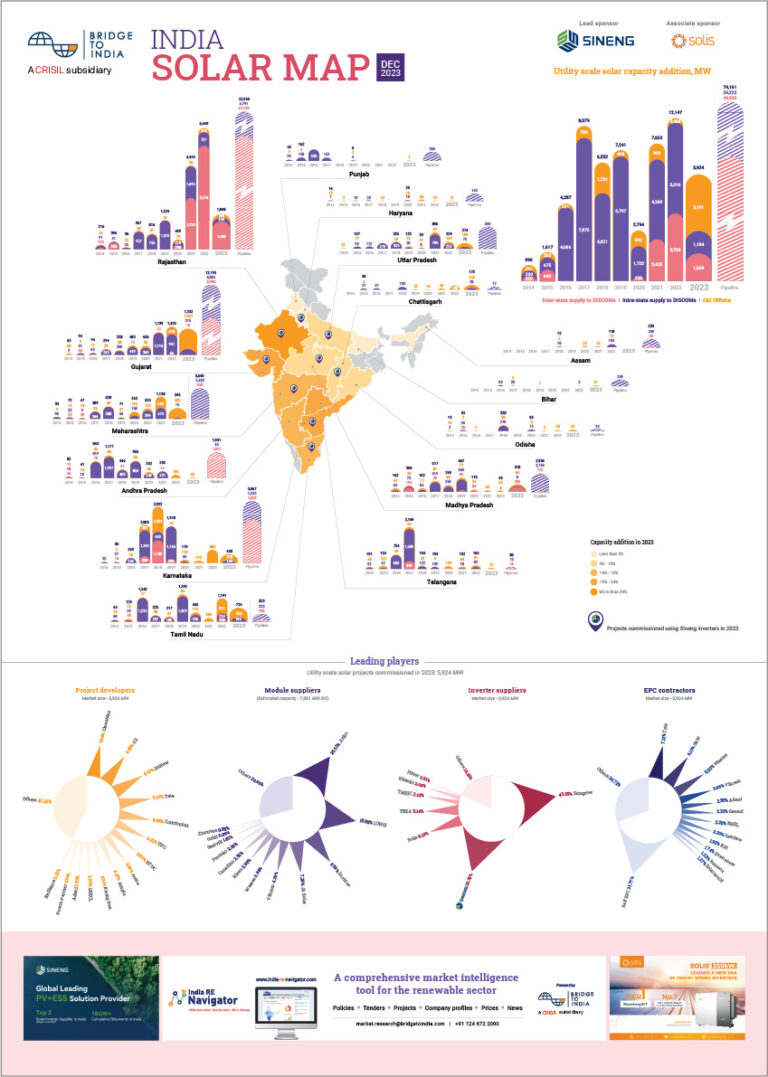SECI concluded its 1,200 MW ISTS wind tranche X auction earlier this week. The tender was oversubscribed by 2.6 times. Successful bidders include Adani (300 MW), Ayana (300 MW), Evergreen Power (150 MW) and JSW (450 MW) with tariffs between INR 2.77-2.78/ kWh. Azure (300 MW, INR 2.79/kWh), O2 (300, 2.80), Shirdi Sai (300, 2.84), AMP (150, 2.88), Enel (150, 3.06), ReNew (300, 3.28) and SITAC RE (300, 3.39) were the unsuccessful bidders. Entire power output would be purchased by Rajasthan DISCOMs.
- A combination of lower wind speed in proposed locations, more expensive land and lower tariff would put margins under pressure;
- Pressure on developers to deploy capital has led them to bid aggressively notwithstanding operational and financial concerns;
- Competitive proposition of wind power vs solar power looks better after 40% BCD on solar modules;
Transmission connectivity is restricted to six pre-identified substations in Karnataka, Tamil Nadu, Maharashtra and Madhya Pradesh. The tender is SECI’s attempt to seek wider geographical spread for wind projects after repeated undersubscription in pan India ISTS tenders. Most projects under these tenders, proposed to be located in Gujarat and Tamil Nadu because of higher wind speeds, have been delayed extensively due to severe land and transmission capacity constraints (besides rising capital costs).
Figure: Wind auction results since 2018

Source: BRIDGE TO INDIA research
Remarkably, this was the first fully subscribed pure wind auction by SECI in over 1.5 years. The number of interested bidders, 11, is the highest for pure wind auctions in nearly three years. For Ayana, Azure, O2, Shirdi Sai and Amp, it is their first bid ever for a wind project. Mixed record of solar auctions in the recent past – lack of DISCOM interest despite record low tariffs – has forced developers to turn attention to wind power. Increase in bid intensity has inevitably led to aggressive bidding. As seen in the chart, the auction tariff of INR 2.77-2.78 is the lowest since September 2018.
Pressure on developers to scale up and deploy capital has led them to set aside concerns related to land acquisition, supply side problems and rising capital costs. We understand that most project developers are looking to set up projects in Karnataka. But a combination of lower wind speed, more expensive land and lower tariff would put margins under pressure. Our financial calculations show equity IRR in the sub-10% territory. With little expectation of wind turbine cost coming down unlike solar equipment, it is hard to justify these tariffs.
The auction result is a sure but small step towards revival in wind power procurement after lull over last couple of years. Competitive proposition of wind power looks better with solar tariffs set to rise by about INR 0.52/ kWh after 40% BCD. Wind also does a better job than solar in meeting evening peak power demand. But turbine supply side – both quantity and prices – remains a daunting challenge.












